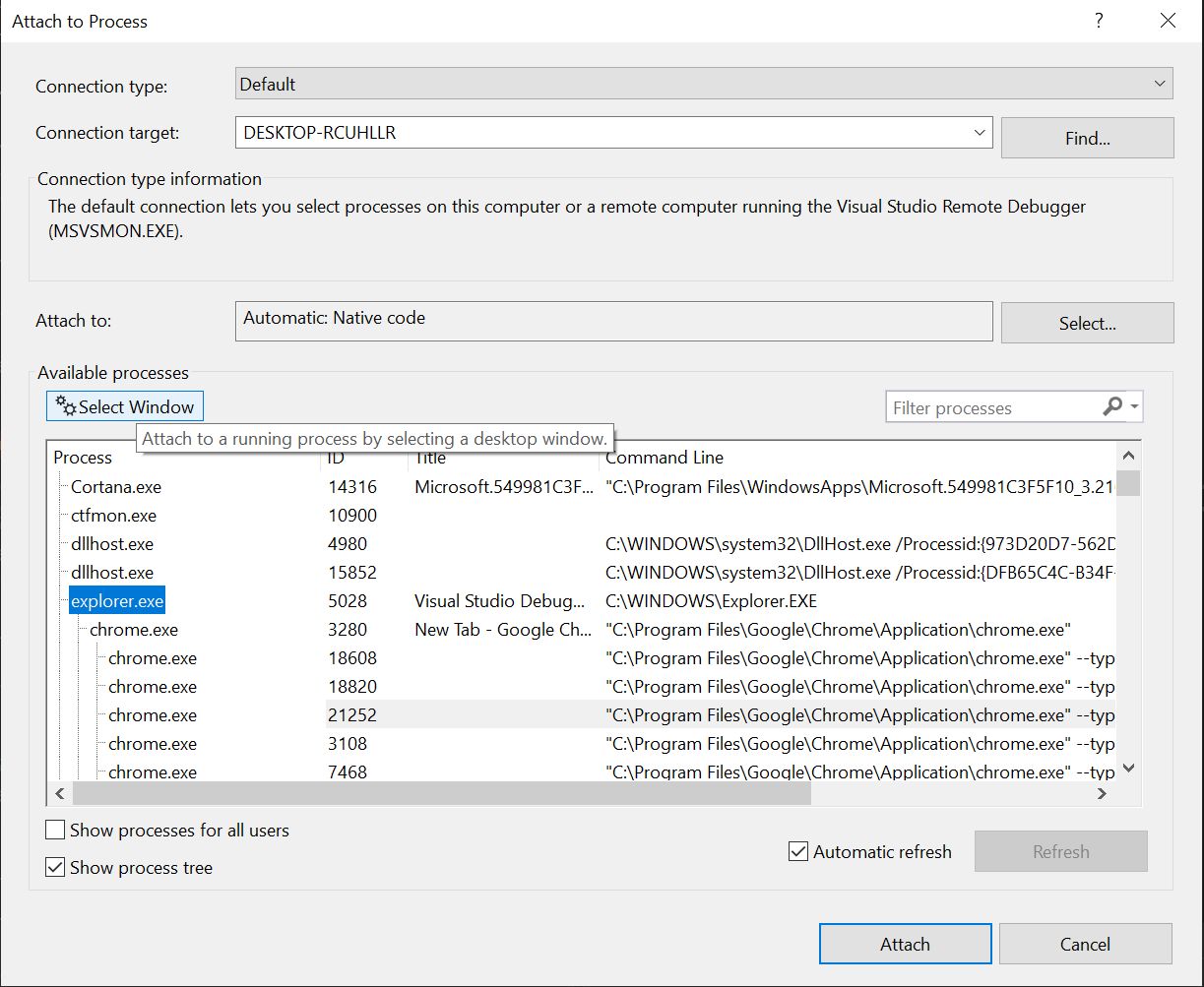Introduction
Google Chrome is one of the most popular web browsers in the world, known for its speed, simplicity, and user-friendly interface. One of the key features that sets Chrome apart from other browsers is its unique multiprocess architecture. Unlike traditional browsers that run as a single process, Google Chrome utilizes multiple processes to enhance performance, stability, and security.
In this article, we will delve into the intricacies of Google Chrome's multiprocess architecture, exploring the reasons behind this innovative approach and its impact on the browsing experience. By understanding the inner workings of Chrome's multiprocess model, users can gain valuable insights into how the browser operates and how to leverage its capabilities for a smoother and more secure web browsing experience.
As we unravel the layers of Chrome's multiprocess architecture, we will uncover the benefits and potential drawbacks of this approach, shedding light on how it influences the browser's performance and resource management. Additionally, we will provide practical tips on managing multiple processes in Google Chrome, empowering users to optimize their browsing environment and address any challenges that may arise.
Join us on this journey through the intricate web of Google Chrome's multiprocess architecture, and discover the underlying mechanisms that drive the browser's performance and reliability. Whether you're a casual user or a tech enthusiast, this exploration will offer valuable insights into the inner workings of one of the most widely used web browsers in the world.
Understanding Google Chrome's Multiprocess Architecture
Google Chrome's multiprocess architecture is a fundamental aspect of its design, setting it apart from traditional single-process browsers. At the core of this architecture is the concept of running each tab, plugin, and extension as a separate process, providing enhanced performance, security, and stability.
When a user launches Google Chrome, the browser initiates a main process, also known as the browser process, which manages essential functions such as displaying the user interface, handling user input, and coordinating overall browser operations. In addition to the browser process, Chrome creates separate processes for each open tab, ensuring that a single problematic tab does not compromise the entire browsing session.
This multiprocess approach offers several key advantages. Firstly, it enhances the browser's responsiveness by distributing tasks across multiple processes, preventing a single tab or plugin from causing the entire browser to become unresponsive. This means that if a website or web application experiences a performance issue, it is isolated to its respective process, safeguarding the overall browsing experience.
Moreover, the multiprocess architecture contributes to improved security. By isolating each tab and plugin in its own process, Chrome can mitigate the impact of potential security vulnerabilities. If a malicious website attempts to exploit a security flaw, the damage is contained within the specific process, preventing it from affecting other tabs or compromising the browser's integrity.
Furthermore, the multiprocess model bolsters the browser's stability. In the event of a tab or plugin crash, only the affected process is terminated, allowing the rest of the browser to continue operating without disruption. This resilience ensures that users can navigate the web with minimal interruptions, even in the presence of problematic web content.
By understanding the intricacies of Google Chrome's multiprocess architecture, users can appreciate the underlying mechanisms that drive the browser's performance and reliability. This insight empowers users to make informed decisions about their browsing habits and equips them with the knowledge to troubleshoot issues related to tab management, performance optimization, and security concerns.
In the next sections, we will delve deeper into the specific benefits and potential drawbacks of Google Chrome's multiprocess architecture, shedding light on how it shapes the browsing experience and influences resource management. Additionally, we will provide practical guidance on managing multiple processes in Chrome, enabling users to harness the full potential of this innovative architecture.
Benefits of Multiple Processes in Google Chrome
Google Chrome's utilization of multiple processes offers a myriad of benefits that significantly enhance the browsing experience for users. By embracing this innovative approach, Chrome sets itself apart from traditional single-process browsers, delivering improved performance, security, and stability. Let's explore the key advantages of Chrome's multiprocess architecture in detail:
1. Enhanced Performance:
-
Responsiveness: The multiprocess architecture of Chrome ensures that each tab, plugin, and extension operates as a separate process. This distribution of tasks prevents a single problematic tab or plugin from causing the entire browser to become unresponsive. As a result, users experience smoother and more responsive browsing, even when encountering resource-intensive web content.
-
Optimized Resource Management: By allocating separate processes to individual tabs, Chrome effectively manages system resources. This approach prevents one tab from monopolizing system memory or CPU resources, leading to a more balanced and efficient utilization of hardware resources. As a result, users can navigate multiple websites simultaneously without experiencing significant slowdowns or performance bottlenecks.
2. Improved Security:
-
Isolation of Processes: Each tab and plugin in Chrome operates within its own sandboxed process, isolating it from other components of the browser. This isolation mitigates the impact of security vulnerabilities, as any malicious activity or exploitation is confined to the specific process. Consequently, the integrity of the overall browsing session remains safeguarded, reducing the risk of widespread security breaches.
-
Enhanced Protection Against Malware: The multiprocess architecture of Chrome provides an additional layer of defense against malware and malicious websites. In the event of a security threat, the isolation of processes limits the propagation of malware, preventing it from infiltrating other tabs or compromising the user's system. This proactive security measure contributes to a safer and more secure browsing environment.
3. Enhanced Stability:
-
Isolated Crash Handling: In the event of a tab or plugin crash, Chrome's multiprocess architecture ensures that only the affected process is terminated, while the rest of the browser continues to operate seamlessly. This isolated crash handling prevents a single tab or plugin failure from disrupting the entire browsing session, allowing users to maintain uninterrupted access to other open tabs and applications.
-
Improved Reliability: The resilience of Chrome's multiprocess model enhances the overall reliability of the browser. Users can navigate the web with confidence, knowing that the failure of one tab or plugin will not compromise the stability of their entire browsing experience. This reliability is particularly valuable for users who rely on Chrome for productivity, research, or entertainment purposes.
In essence, the benefits of Google Chrome's multiprocess architecture extend beyond mere technical enhancements. They directly translate into a more efficient, secure, and reliable browsing experience for users, empowering them to explore the web with confidence and agility. As we continue to unravel the intricacies of Chrome's multiprocess architecture, it becomes evident that these benefits play a pivotal role in shaping the browser's reputation as a leading platform for web browsing and productivity.
Potential Drawbacks of Multiple Processes in Google Chrome
While Google Chrome's multiprocess architecture offers compelling advantages, it is important to acknowledge the potential drawbacks associated with this innovative approach. Understanding these limitations can provide valuable insights into the nuanced dynamics of Chrome's performance and resource management. Let's explore the potential drawbacks of Chrome's multiprocess architecture in detail:
-
Increased Memory Consumption:
- One of the notable drawbacks of Chrome's multiprocess architecture is its potential impact on memory consumption. Running each tab, plugin, and extension as a separate process can lead to a higher overall memory footprint compared to single-process browsers. This can be particularly evident when users have numerous tabs open simultaneously, potentially taxing system resources and leading to increased memory usage.
-
Resource Overhead:
- The management of multiple processes in Chrome incurs a certain level of resource overhead. While this approach contributes to improved stability and security, it also requires additional system resources to manage and coordinate the various processes. In some cases, this resource overhead may lead to a slightly higher CPU utilization and energy consumption, especially on devices with limited hardware capabilities.
-
Complex Process Management:
- For users with a keen interest in system resource management, the multiprocess architecture of Chrome may introduce a level of complexity in monitoring and managing individual processes. Unlike single-process browsers where all activities are contained within a unified process, Chrome's approach necessitates a more granular understanding of process behavior and resource allocation, which may pose challenges for some users.
-
Potential Performance Impact on Low-End Devices:
- While Chrome's multiprocess architecture excels in optimizing performance on modern hardware, it may present performance challenges on low-end devices with limited memory and processing power. The overhead associated with managing multiple processes could potentially strain the resources of such devices, leading to slower performance and increased battery consumption.
-
Compatibility and Extension Issues:
- The multiprocess architecture of Chrome may introduce compatibility and performance issues with certain extensions and web applications. While Chrome's ecosystem is vast and diverse, some extensions and web tools may not be fully optimized to operate seamlessly within the context of multiple processes, potentially leading to compatibility challenges and performance discrepancies.
It is important to note that while these potential drawbacks exist, Google Chrome's development team continually works to address and mitigate these challenges through ongoing optimizations and feature enhancements. By acknowledging these limitations, users can make informed decisions about their browsing environment and leverage available tools and settings to tailor Chrome's performance to their specific needs and preferences.
How to Manage Multiple Processes in Google Chrome
Managing multiple processes in Google Chrome is essential for optimizing the browsing experience, addressing performance concerns, and ensuring efficient resource utilization. While Chrome's multiprocess architecture offers inherent benefits, users can further enhance their browsing environment by leveraging built-in features and third-party tools to manage and monitor the diverse processes operating within the browser.
1. Task Manager:
Google Chrome provides a built-in Task Manager that allows users to view and manage individual processes, tabs, and extensions. Accessible via the Chrome menu or by pressing Shift + Esc, the Task Manager provides real-time insights into memory and CPU usage, enabling users to identify resource-intensive processes and selectively terminate or reload specific tabs or extensions.
2. Tab Management:
Efficient tab management is crucial for optimizing Chrome's multiprocess architecture. Users can leverage features such as tab grouping, tab freezing, and tab discarding to streamline their browsing experience. Tab grouping organizes related tabs into distinct groups, reducing clutter and enhancing navigation. Tab freezing suspends inactive tabs to conserve system resources, while tab discarding intelligently manages memory usage by unloading tabs that are not actively in use.
3. Extensions and Plugins:
Careful management of extensions and plugins can significantly impact Chrome's performance and resource utilization. Users should regularly review and disable unnecessary or resource-intensive extensions to minimize the strain on system resources. Additionally, ensuring that plugins are up to date and compatible with Chrome's multiprocess architecture can contribute to a smoother browsing experience.
4. Performance Monitoring:
Third-party extensions and tools, such as system monitoring utilities and task management extensions, can provide in-depth insights into Chrome's process behavior and resource consumption. These tools enable users to monitor CPU, memory, and network usage, empowering them to identify and address performance bottlenecks and resource-intensive processes effectively.
5. Browser Settings:
Chrome offers a range of settings that allow users to customize the behavior of its multiprocess architecture. Users can adjust settings related to process management, tab behavior, and performance optimization to align Chrome's operation with their specific preferences and hardware capabilities. By fine-tuning these settings, users can tailor Chrome's performance to suit their individual browsing habits and system requirements.
By proactively managing multiple processes in Google Chrome, users can harness the full potential of the browser's multiprocess architecture, ensuring optimal performance, stability, and resource efficiency. Whether through built-in features, third-party tools, or strategic configuration adjustments, effective process management empowers users to navigate the web with agility and confidence, leveraging Chrome's innovative architecture to its fullest extent.
Conclusion
In conclusion, Google Chrome's adoption of a multiprocess architecture represents a paradigm shift in web browsing, redefining the standards for performance, security, and stability. By dissecting the intricacies of Chrome's multiprocess model, users gain a profound understanding of the underlying mechanisms that drive the browser's operation and influence the overall browsing experience.
The benefits of Chrome's multiprocess architecture, including enhanced performance, improved security, and enhanced stability, underscore the transformative impact of this innovative approach. Users can navigate the web with confidence, knowing that the browser's robust architecture mitigates the impact of potential security threats and ensures seamless operation, even in the face of resource-intensive web content.
While the potential drawbacks of increased memory consumption and resource overhead warrant consideration, Google Chrome's development team continues to refine and optimize the browser's multiprocess architecture, addressing these challenges to deliver a more streamlined and efficient browsing experience.
Effective management of multiple processes in Google Chrome is pivotal for users seeking to optimize their browsing environment. Leveraging built-in features such as the Task Manager, strategic tab management, and careful oversight of extensions and plugins empowers users to tailor Chrome's performance to their specific needs and preferences.
As users embark on their web browsing journeys, armed with a deeper understanding of Chrome's multiprocess architecture and equipped with practical management strategies, they can navigate the digital landscape with agility and confidence. Google Chrome's multiprocess architecture stands as a testament to the relentless pursuit of innovation, setting new benchmarks for web browser performance and redefining the boundaries of user experience in the digital realm.
In essence, the exploration of Google Chrome's multiprocess architecture transcends the realm of technical intricacies, offering users a glimpse into the intricate web of innovation and engineering excellence that underpins one of the world's most widely used web browsers. As users continue to embrace the evolving landscape of web technologies, the multiprocess architecture of Google Chrome remains a cornerstone of efficiency, security, and reliability, shaping the future of web browsing for generations to come.

























